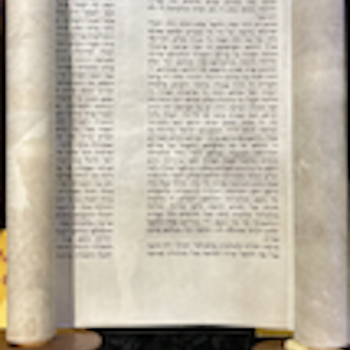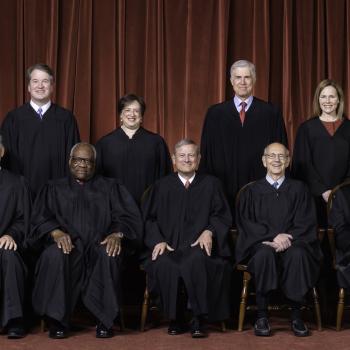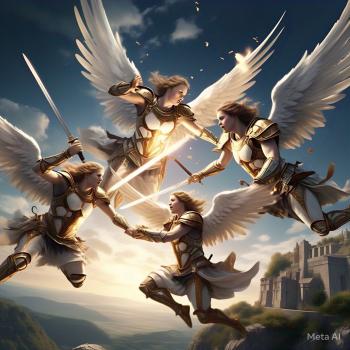 The first three gospels of the New Testament (NT) are Matthew, Mark, and Luke. They are called “the synoptic gospels” because they often narrate the same events in the itinerant ministry of Jesus with the same or similar wording. And oftentimes they have the same sequence of events, but certainly not always, which thereby offers some semblance of chronology of events in the life of Jesus.
The first three gospels of the New Testament (NT) are Matthew, Mark, and Luke. They are called “the synoptic gospels” because they often narrate the same events in the itinerant ministry of Jesus with the same or similar wording. And oftentimes they have the same sequence of events, but certainly not always, which thereby offers some semblance of chronology of events in the life of Jesus.
About half of the Gospel Luke follows this format found in the gospels of Matthew and Mark. Thus, the Gospel of Luke has what many NT scholars call “the central section,” which is a large portion in Lk 9.51–18.30. The NRSV signifies this central section as being unusual, without saying anything of it, by inserting two blank lines immediately preceding Lk 9.1 and immediately succeeding Lk 18.30.
In this Lukan central section, many pericopees are the same or similar with those in the other two synoptic gospels. But the order of sequence is different. Moreover, Luke begins this section by saying of Jesus, “When the days drew near for him to be taken up, he set his face to go to Jerusalem” (Lk 9.51).
The expression “taken up” in Lk 9.51 seems to refer to Jesus’ impending crucifixion, though it could refer also to his resurrection and heavenly ascension as a progression of events in which Jesus actually goes up. In the Gospel of John, this is described as Jesus being “lifted up,” though it could refer only to his crucifixion (Jn 3.14; 12.32, 34).
All three synoptic gospels relate Jesus’ so-called Olivet Discourse (Mt 24; Mk 13; Lk 21). Jesus delivered this eschatological message only to his disciples and during Passion Week. It was prompted by Jesus and his disciples sitting on the Mount of Olives overlooking the temple in Jerusalem. The disciples commented on the beauty of the temple buildings, and Jesus said of them, “not one stone will be left here upon another; all will be thrown down” (Mt 24.2).
Historians tell us that those stones were huge and shaped something like ten feet high and wide and twenty feet long. This prediction by Jesus was actually fulfilled perhaps forty years later, in AD 70, when the Romans defeated the Jews in the First Jewish War and overturned all those stones at the temple. It happened because there was fire, the gold platings melted, the hot metal flowed down through the separations between the stones, and the soldiers afterward removed the stones to get the gold.
But in this Olivet Discourse, Jesus tells much about the future besides that destruction of the temple buildings. The discourse centers on Jesus future return in great glory that will occur at the end of the age. Referring to himself as the Son of Man, Jesus says, “For as the lightning comes from the east and flashes as far as the west, so will be the coming of the Son of Man. Wherever the corpse is, there the vultures will gather” (Mt 24.27-28). These two sentences seem a bit disjointed. That is, what does Jesus’ return have to do with a corpse? What does he mean by “the corpse”? And does he mean actual vultures, or are we to understood them non-literally?
Jesus Olivet Discourse in the gospels of Matthew and Mark are quite similar. But Luke is a bit different. For one thing, Luke does not relate about the lightning analogy or the corpse and vultures. However, in Luke’s central section, which precedes the location of Jesus’ Olivet Discourse in his gospel, Luke has a significant portion, in Lk 17.24-37, in which he quotes Jesus delivering some of the same material that Matthew and Mark have in their account of Jesus’ Olivet Discourse. One of the elements Luke relates in this portion is the material about the corpse and vultures. In it, Luke provides answers that Matthew and Mark do not provide.
Luke begins Lk 17.24-37 with the lightning analogy. He says that just prior to Jesus return, people will be living normal lives as they always have, thus eating and drinking, marrying, buying and selling, just as it was right before the flood in the days of Noah. All of this is in Matthew’s and Mark’s account of Jesus’ Olivet Discourse. And like them, Luke then relates that at the time of Jesus’ return, on that night there will be two in one bed; one will be taken and the other left. There will be two women grinding meal together; one will be taken and the other left” (Lk 17.34-35).
Although there has been some debate about this, I think, as the majority of NT scholars have, that Jesus here refers to his people, both dead and living, being raised up by resurrection or translation, respectively, to join Jesus in the air. Thus, those left are non-believers.
Luke then relates concerning Jesus and his disciples, “Then they asked him, ‘Where, Lord?’ He said to them, ‘Where the corpse is, there the vultures will gather'” (Lk 17.37). This means that when Jesus returns at the end of the age, he will come from heaven and hover over Jerusalem before descending to fight his enemies.
When you look at all the biblical prophecies about the end of the age, there are so many that tell about the militaries of the nations of the world gathering into the land of Israel to totally annihilate the nation of Israel and thus its citizens (e.g., Joel 3.2, 9-16; Zechariah 12.1-9; 14.1-4). And they especially will besiege Jerusalem and destroy its temple, just as the Romans did millennia earlier. Then Jesus will descend to deliver the surviving remnant of Jews and destroy their enemies. Jesus calls that destruction “the corpse.” And when it happens, so many vultures will gather and descend on those dead bodies. This entire scenario is narrated most graphically in Revelation 19.11-21.
So, what is the answer to the disciples’ question, “Where, Lord?” in Lk 17.37? It is Jerusalem. That is where the angels will gather all the elect who had been raised throughout the world into the air (e.g., Matt. 24.31). The angels will gather them in the air above Jerusalem to meet Jesus.
And where will the vultures gather? They will gather and descend to Jerusalem, more particularly “the winepress” just outside the city. The blood from both humans and horses will flow mixed with rain six feet high through the Kidron Valley and to the south for 200 miles before emptying into the Gulf of Aqaba (Isaiah 63.1-6; Rev. 14.17-20).













